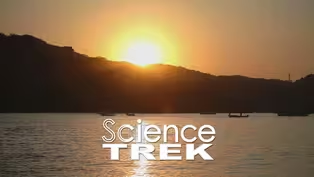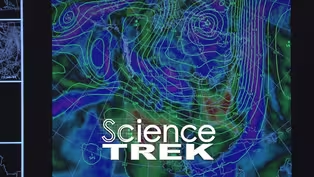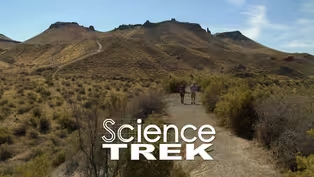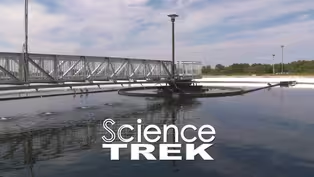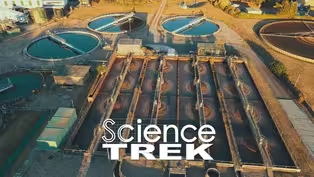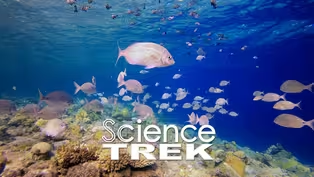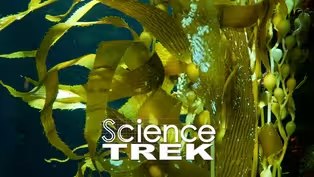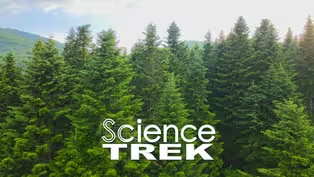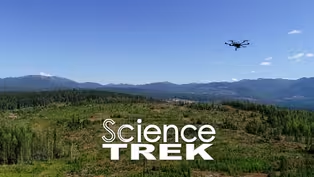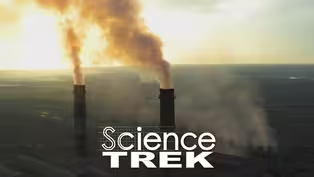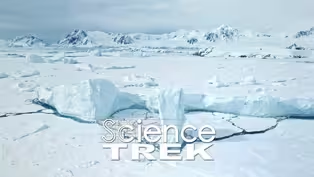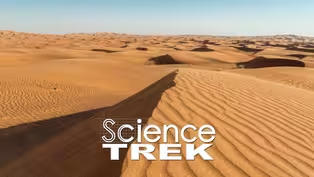
Deserts: Cacti, Bees and the Sonoran Desert
Special | 6m 23sVideo has Closed Captions
How do Saguaro Cacti survive in the desert?
The Saguaro National Park is found in the Sonoran Desert. This Park is home to the largest species of cacti. Find out more about this interesting desert and the scientists studying there at the Arizona Sonora Desert Museum.
Problems playing video? | Closed Captioning Feedback
Problems playing video? | Closed Captioning Feedback
Science Trek is a local public television program presented by IdahoPTV
Major Funding by the Laura Moore Cunningham Foundation and the Idaho National Laboratory. Additional Funding by the Friends of Idaho Public Television and the Corporation for Public Broadcasting.

Deserts: Cacti, Bees and the Sonoran Desert
Special | 6m 23sVideo has Closed Captions
The Saguaro National Park is found in the Sonoran Desert. This Park is home to the largest species of cacti. Find out more about this interesting desert and the scientists studying there at the Arizona Sonora Desert Museum.
Problems playing video? | Closed Captioning Feedback
How to Watch Science Trek
Science Trek is available to stream on pbs.org and the free PBS App, available on iPhone, Apple TV, Android TV, Android smartphones, Amazon Fire TV, Amazon Fire Tablet, Roku, Samsung Smart TV, and Vizio.
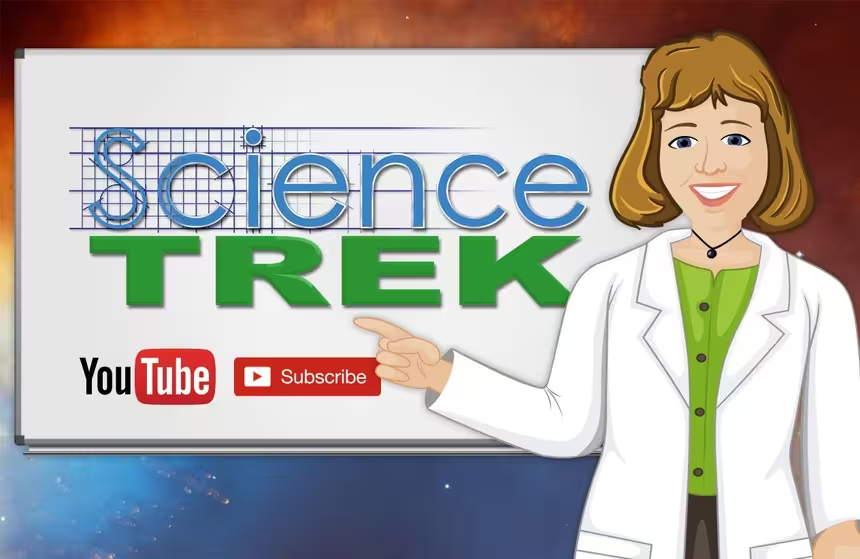
Science Trek
Science Trek is a place where parents, kids, and educators can watch short, educational videos on a variety of science topics. Every Monday Science Trek releases a new video that introduces children to math, science, technology, engineering, and math (STEM) career potentials in a fun, informative way.More from This Collection
The environment is where we live. It is where all the animals, insects, plants and other living things make their place in the world. It is everything that makes up our surroundings including the air we breathe, the water we drink and the land we live upon. Scientists study many different parts of the environment to learn how these systems work. Learn more about the environment.
Weather: Meteorologists At Work
Video has Closed Captions
How do meteorologists forecast the weather? (5m 13s)
Sewage: Sewage Through the Ages
Video has Closed Captions
What shouldn’t you put down the drain or flush away? (5m 59s)
Oceans: What's Under the Surface?
Video has Closed Captions
Oceans cover 70% of the Earth’s surface. Find out more about what’s under the surface. (7m 4s)
Oceans: Saving Kelp with AI and ROV
Video has Closed Captions
How do you use AI, ROV and an x-box joystick to save kelp? (6m 50s)
Video has Closed Captions
Forests provide us oxygen to breathe and much more. Find out about Forests. (5m 5s)
Forests: Flying Drones for the Trees
Video has Closed Captions
Learn about the latest technology used to manage forest land. (6m 49s)
Climate: Climate Change and Greenhouse Gases
Video has Closed Captions
Meet a climate scientist and join her on a mission. (6m 11s)
Providing Support for PBS.org
Learn Moreabout PBS online sponsorshipJOAN CARTAN-HANSEN, HOST: The Saguaro National Park is home to the largest species of cacti.
Nearby is the Arizona Sonora Desert Museum.
These are great places to learn more about the desert.
[MUSIC] KIM FRANKLIN, ASSOC.
DIR.
ARIZONA-SONORA DESERT MUSEUM: The Sonoran Desert is half in Mexico and half in the United States, primarily in Arizona and it extends into a little bit of California.
In Mexico it extends down through the state of Sonora, and it includes the Gulf of California.
CARTAN-HANSEN: Kim Franklin is the Associate Director for Conservation for the museum and Jesus Manuel Garcia is a Research Associate.
JESUS MANUEL GARCIA, RESEARCH ASSOCIATE, ARIZONA-SONORA DESERT MUSEUM: We have deserts like the Sonoran Desert.
Look at this.
This is one of the most diverse deserts in the world.
We have thousands of species of plants.
FRANKLIN: So, we are on the upper edge of what the rainfall limit is for deserts around 12 inches a year, and a lot of the species here are derived from tropical locations south of us.
And so, this desert has a very lush feel.
CARTAN-HANSEN: What makes this place so special are the Saguaro cacti.
GARCIA: The Saguaro is columnar cacti.
It's a very, very large cactus, and they are famous, first of all, by the size, the shape, the structure that they have.
And what is it that is unique about them?
They can hold water.
How does that work?
They can store water in their tissue, in their body.
They have a mechanism that allows them for them to get water when it's available and hold it and when they need it, they can use it.
CARTAN-HANSEN: Cacti have other ways to survive in the desert, especially ways to keep other creatures going after their water supply.
Some have spikes.
Some have hair.
And defenses like waxy skin also act like sunscreen, protecting the leaves from wind and sun.
And there's one more thing.
GARCIA: Many desert plants like cactus, they are toxic.
Why are plants toxic?
Because they themselves are protecting themselves from animals eating them.
CARTAN-HANSEN: Some birds aren't stopped by all those defenses.
GARCIA: And those birds have figured out that if you dig a hole in the Saguaro, in this succulent thick cactus, you can make a home in there.
You can make a nest, and that could be a beautiful, safe, warm in the winter.
Cool in the summer kind of house inside the Saguaro through this hole.
Now, what happened at that moment, the Saguaro has suffered a wound.
That wound heals just like a scab when you cut yourself in your skin.
So, the Saguaro itself, the tissue of the Saguaro creates a protection around that wound, which is a hard scab that the Saguaro is doing in order to protect itself from the environment.
In the meantime, that wound, it's somebody's wonderful nest.
CARTAN-HANSEN: Cacti in the Sonoran desert have evolved into all different sorts of shapes and sizes.
Scientists think all the differences are due to the temperature range during the day, the amount of sand in the soil and seasonal changes.
And the cacti aren't the only amazing thing about this desert.
There are more different types of bees here than anywhere else.
FRANKLIN: We have an incredible plant diversity here in the Sonoran Desert and flowers are bee food.
And we have two rainy seasons, a summer and a winter, and that leads to different plant species growing.
And so, we have bees that are active only during the winter, and some that are active only during the summer.
And so, there's just a lot of different resources available to bees here.
CARTAN-HANSEN: And bees aren't the only ones who call this desert their home.
FRANKLIN: We think of deserts as a really tough place to survive, right?
But the plants and animals that live here in the desert, thrive in the desert.
They love the desert.
This is where they want to live.
CARTAN-HANSEN: Learning how to support places like deserts means finding ways to protect them.
GARCIA: Like oceans, like rainforests, like any other biomes that I've mentioned before, deserts are threatened by human action, human development, highways, you name it.
CARTAN-HANSEN: While deserts, as we know them, are threatened, there is an odd twist.
The amount of desert land is actually increasing.
It's called desertification.
Land gets overused.
Trees get cut down.
Water supplies dry up and native vegetation die off.
The soil dries up and erosion takes its toll.
More than 25 percent of the land on earth is at risk for desertification.
That's why people like Franklin and Garcia study this landscape.
GARCIA: Deserts are very important because they are simply biomes like any other biome.
It's a place to live, as a habitat, as an ecosystem, that large amounts of biodiversity depend on them, and it's simply another place to live.
FRANKLIN: Deserts are a beautiful place to explore, especially the Sonoran Desert is just full of the most fascinating plants and animals.
CARTAN-HANSEN: If you want to learn more about deserts, check out the Science Trek website.
You'll find it at ScienceTrek.org.
[MUSIC] ANNOUNCER: Presentation of Science Trek on Idaho Public Television is made possible through the generous support of the Laura Moore Cunningham Foundation, committed to fulfilling the Moore and Bettis family legacy of building the great state of Idaho.
By the Idaho National Laboratory, mentoring talent and finding solutions for energy and security challenges, by the Friends of Idaho Public Television and the Corporation for Public Broadcasting.
Video has Closed Captions
Clip: Special | 1m 4s | What is the difference between a cold and a polar desert? (1m 4s)
Video has Closed Captions
Clip: Special | 1m 4s | What is a dromedary? (1m 4s)
Providing Support for PBS.org
Learn Moreabout PBS online sponsorship
- Science and Nature

Explore scientific discoveries on television's most acclaimed science documentary series.

- Science and Nature

Capturing the splendor of the natural world, from the African plains to the Antarctic ice.












Support for PBS provided by:
Science Trek is a local public television program presented by IdahoPTV
Major Funding by the Laura Moore Cunningham Foundation and the Idaho National Laboratory. Additional Funding by the Friends of Idaho Public Television and the Corporation for Public Broadcasting.
